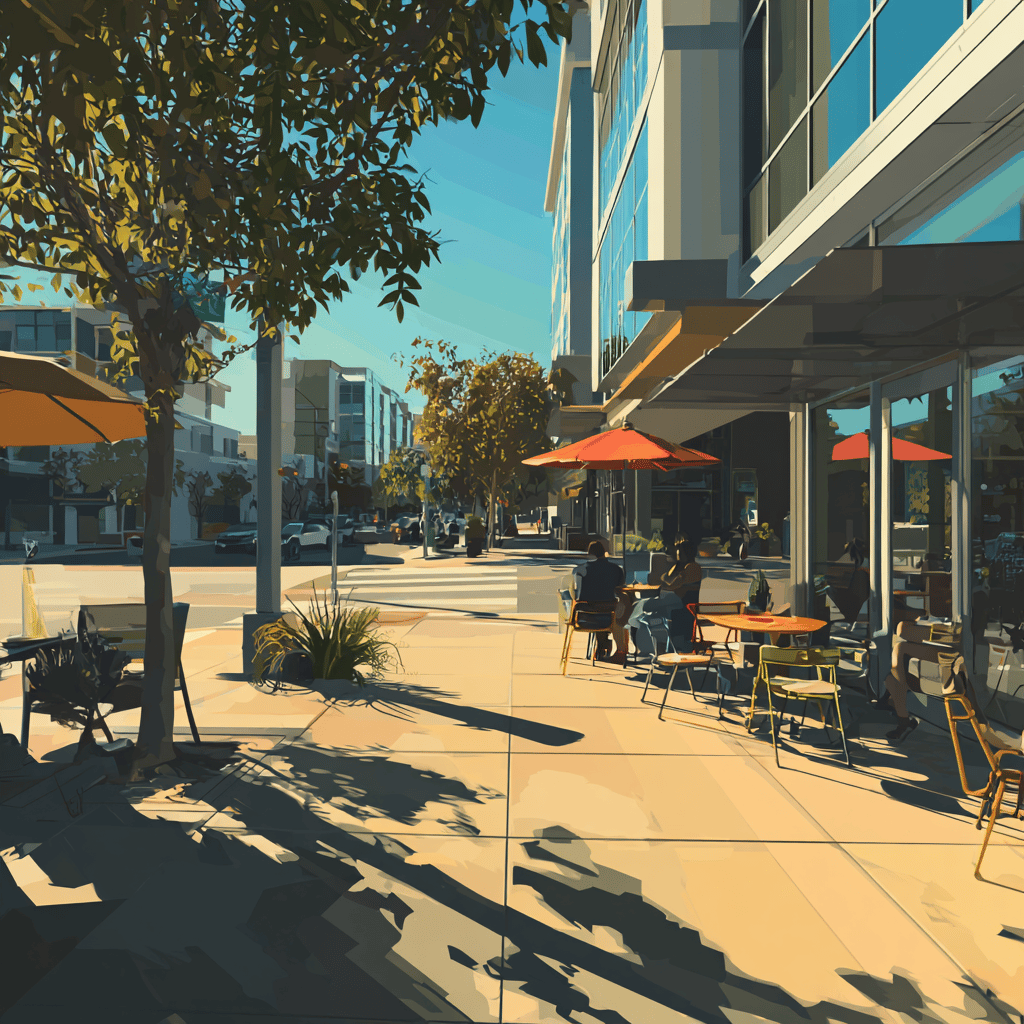When Valerie Bertele attended a creative writing gathering at The Battery on Tuesday evening, she discovered that the highly anticipated occasion had drawn only a modest audience. The Battery, an exclusive private members’ club in San Francisco, has long been regarded as a nexus for prominent figures from the technology sector, the same community that frequently undertakes the journey of more than 300 miles northeast to Nevada’s Black Rock Desert in order to participate in the annual countercultural pilgrimage that is Burning Man.
“Fewer than ten individuals showed up,” Bertele remarked in some disbelief. Bertele, a venture capitalist with Yellow Rocks Capital, went on to explain that the organizers themselves admitted the diminished attendance stemmed from the fact that so many locals and industry regulars seemed to have absconded to Burning Man instead of signing up for the event.
Within Silicon Valley’s elite circles, the festival has grown into more than a quirky desert celebration; rather, it has become perceived as a near-essential rite of passage, one of those signature rituals that bind the tech world’s movers and shakers together. High-profile figures such as Elon Musk and Google’s original cofounders have been known to be recurring participants, and even OpenAI’s chief executive, Sam Altman, has publicly expressed that the gathering gave him a glimpse into what life in a post-artificial general intelligence world might resemble.
Despite the harsh realities of this year’s iteration — ranging from foreboding dust storms to the festival’s precarious financial standing — Burning Man has again succeeded in attracting a vast number of Silicon Valley’s leaders and innovators. For those left behind in the Bay Area, their absence is unmistakable: roadways flow with unusual ease, dinner reservations are easier to secure, and inboxes overflow with ubiquitous out-of-office auto-replies. Everyday existence, typically defined by relentless momentum and ceaseless activity, momentarily shifts into a slower and far more tranquil rhythm.
Communications strategist Vijay Chattha, who leads both his namesake firm VSC and its investment arm, VSC Ventures, illustrated this change of pace by noting that his usually packed call schedule felt noticeably lighter during this week. Chattha explained that he can reliably deduce when executives are out at Burning Man: if a founder, CEO, or other key decision-maker is curiously unavailable during this period, it is almost always because they have joined the throngs on the Playa. According to him, the festival temporarily tempers the usual high-strung, cortisol-fueled intensity that dominates Silicon Valley professionals’ normal lives.
There are, in fact, some tangible advantages to this depletion of the tech population in San Francisco. Chattha commented that gaining a table at popular restaurants suddenly feels effortless, and his daily commute from Marin into the city has been more fluid than usual. Similarly, Alison Berman, a professional who has spent a decade navigating the Valley primarily in the sphere of climate technology, observed a visible decline in car traffic. Although Berman has personally distanced herself from Burning Man, citing its heavy environmental footprint despite its vaunted “leave no trace” mantra, many of her friends are nonetheless drawn to the event year after year. She described the sensation of remaining in the city during festival week as akin to inhabiting a ghost town: a conspicuous emptiness punctuated by absent founders and venture capitalists. The upside, she admitted, is reduced traffic congestion coupled with the inevitability of encountering endless automated vacation responses. In her perspective, only two occasions consistently pull Silicon Valley denizens away from their keyboards and devices en masse — Christmas and Burning Man.
For entrepreneurs hoping to raise funds, the period of Burning Man is typically regarded as a dead zone. Ron Wiener, who runs the startup accelerator Venture Mechanics, has after decades in the industry adopted a straightforward strategy: he advises founders to treat Labor Day as the true point of re-engagement, when the community comes flooding back after their desert sojourn. Wiener described his own routine of sending countless emails to venture capitalists and seeking out potential event judges, only to find this timeframe perpetually barren. He emphasized that after more than forty years of fundraising, it has become a predictable reality. What amplifies the emptiness, he said, is that the festival coincides with the traditional summer vacation season and with the common family ritual of college move-ins, creating a perfect storm in which professional activities reach their most stagnant ebb.
Curiously, however, 2025 exhibits a slightly different dynamic. Although ticket sales have indeed risen, the festival has not reached the absolute saturation point witnessed between 2011 and 2023, when sell-outs were the norm. Whereas Burning Man once hosted nearly 79,000 attendees at its zenith, this year organizers told Business Insider they expected roughly 70,000 visitors, still an impressive figure but subtly diminished. According to Eric Rachmel, founder and CEO of OLarry, the week is characterized by a consistent but milder deceleration compared to five years prior. Demographics, he argues, explain this shift: as he and many of his peers transition into their late thirties, a large share of this professional cohort now has young children, making them less inclined to disappear into the desert. In contrast, younger professionals in their twenties and early thirties remain the most frequent participants, with parents often circling back to the festival only once their children are older.
Bertele herself has witnessed the ebb and flow of Burning Man’s popularity across different economic cycles. During periods of mass layoffs and broader financial turbulence, enthusiasm for the festival waned. Yet in recent months, San Francisco has experienced a distinct resurgence, fueled in part by the AI boom and company return-to-office mandates that intensified demand for local housing. The real estate market, long subdued, has surged back to life, with average rents spiking by more than six percent in early 2025. For Bertele, this demonstrates that many newcomers riding the AI wave are now both financially able and culturally eager to invest in the shared networking rituals, such as Burning Man. Although she once attended the gathering herself, she chose not to go this year when her brother encountered visa issues. Nevertheless, as she roams through a city temporarily less populated by her peers, she admitted to feeling a pang of the now-typical fear of missing out.
Chattha confirmed that such FOMO — the fear of being left behind in terms of experiences and connections — remains widespread within his circles of investors and entrepreneurs. He recounted exchanges from his private group chat: while one colleague sipped wine luxuriously in Greece, another battled against chaotic dust storms while setting up camp in the Nevada desert. Ironically, it was the friend lounging in Mediterranean comfort, not the dust-covered “Burner,” who confessed to experiencing envy over missing the festival.
In this way, Burning Man continues to cast its peculiar spell over Silicon Valley: simultaneously celebrated as an escape, derided for its excesses, and regarded as one of the few moments when the ceaseless pulse of the tech industry briefly grows still.
Sourse: https://www.businessinsider.com/silicon-valley-slows-down-during-burning-man-pto-2025-8



